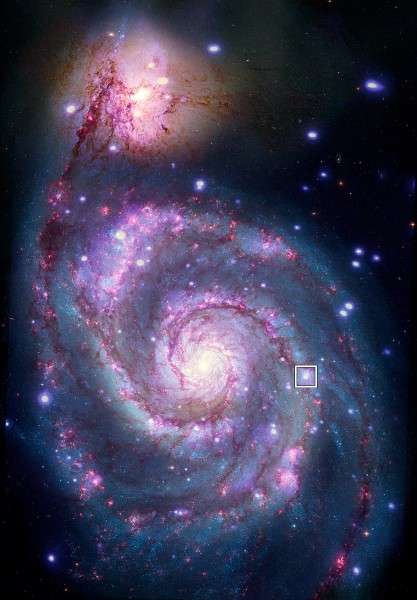Listen to This 'Singing' Lemur Species That Has 'Common Musical Traits' Like Humans Do
Indri lemur songs recorded in the wild have rhythmic categories similar to those found in human music, Max Planck researchers find.

Scientists have confirmed observations of the first-ever exoplanet in another galaxy, 28 million light years away.
While this massive distance diminishes the natural mystique of exoplanet science, as reaching it will be forever impossible to us, it can inform more closely how planets form around their stars under the different gravitational conditions of another galaxy, particularly because the orbit of this new exoplanet is that of a black hole.
Having found all known exoplanets in the Milky Way, nearly 4,800 of which are all within 3,000 light years in distance from us, the Whirlpool Galaxy of Messier 51 becomes the site of the first exo-galactic exoplanet.
"We are trying to open up a whole new arena for finding other worlds by searching for planet candidates at X-ray wavelengths, a strategy that makes it possible to discover them in other galaxies," said Rosanne Di Stefano of the Center for Astrophysics at Harvard University, who led the corresponding study.
Normally, the identification of an exoplanet is done when the continual measurements of light coming from a star in our galaxy is briefly interrupted on a consistent basis, represented by the orbit of the exoplanet eclipsing it for a moment. At 28 million light years away, this strategy was repeated, but with X-rays instead of visible light.
Searching in this way means that the solar systems found will come from "X-ray bright binaries," meaning systems established around the orbit of either a neutron star (a collapsed, high-density star), or a black hole, paired with a smaller, but still massive star.

Around a black hole, gasses are pulled into and heated by gravity's force to extreme temperatures, which can be measured as X-rays. This was the case for Di Stefano and the rest of the research team, who used the Chandra X-ray Observatory to identify the characteristic dip in light from the transiting of a planet.
"The X-ray transit the [authors] found using Chandra data lasted about three hours, during which the X-ray emission decreased to zero," NASA wrote in a release. "Based on this and other information, the researchers estimate the exoplanet candidate in M51-ULS-1 would be roughly the size of Saturn, and orbit the neutron star or black hole at about twice the distance of Saturn from the Sun."
To confirm whether or not the orbiting characteristics are consistent with a planet, the researchers would have to wait an estimated 70 years for it to pass in front of the star again. In the meantime, debate will stir, and some astronomers are already rightly assigning massive coincidence to the nature behind the discovery.
"We know we are making an exciting and bold claim so we expect that other astronomers will look at it very carefully," said co-author Julia Berndtsson of Princeton University. "We think we have a strong argument, and this process is how science works."
One suggestion is it could have been a dense cloud of gas, though the researchers disagree that the X-rays could be blotted out entirely if that were the case.
The planet, NASA points out, had a violent history, as the star around which it orbits would have already gone supernova, that is, to explode with radioactive waves. The planet continues to exist, however, probably because its mass facilitated the survival from such an event.
(WATCH the short video for this story below.)
SHARE This Latest Far Out Research With Friends…
Be the first to comment